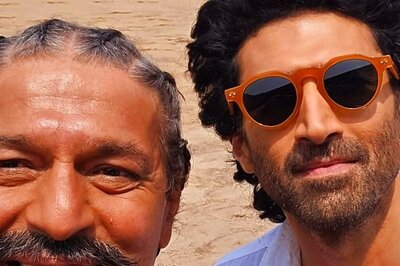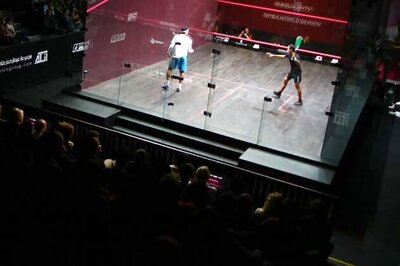
views
The National Aeronautics and Space Administration (NASA) of USA is all set to take off for Mars in July 2020 from the Cape Canaveral terminal in Florida. Achieving another milestone in the preparation for mission Mars 2020, the Jet Propulsion Laboratory (JPL) of Caltech and NASA have demonstrated the flexibility and humanoid stance of its robotic arm, which exhibits its abilities with a bicep curl-like load retention manoeuvre.
In a timelapse video (watch) shared by NASA from JPL's Spacecraft Assembly Facility, the robotic arm, which is 7 feet long, is seen carrying a loaded turret that weighs 40 kilograms. The move, which resembles the weighlifting stance of a body builder, is mighty impressive for its implications. For one, it handled its payload with ease. For reference, the loaded turret included HD cameras, SHERLOC (Scanning Habitable Environments with Raman & Luminescence for Organics & Chemicals), PIXL (Planetary Instrument for X-Ray Lithochemistry), and something that the JPL describes as a "percussive drill and coring mechanism".
The arm itself is mimicked from the biological configuration of the human arm, so as to recreate the flexible functionality of our natural arms. In order to execute the flexible nature of muscles that facilitate our movement, the arm includes five interspersed joints, each accompanied by an electric motor to power the pivots. This arm will be fitted to the rover that will be set on the Martian surface in order to move around and explore the Red Planet.
The idea is to recreate the versatility of the human body as far as possible. NASA's description states that on Mars, and attached to the rover, the arm and turret combination will work just like a human geologist, in terms of picking up objects of curiosity, examining, analysing, studying and recording them, and even collecting them in order to study further when brought to Earth. This, NASA hopes, would give vital knowledge regarding farther frontiers of space, as the body prepares to establish human settlements on the moon by 2028, and eventually, proceed to colonise Mars in the long run.
The arm will play a pivotal role in the juncture of all this, since it is the replicated movement that would help our robots reach out, observe and collect objects that may hav been previously impossible. As Dave Levine, integration engineer for the Mars 2020 mission stated, "You can't help but marvel that the rover will be in space in less than a year from now and performing these exact movements on Mars in less than two."



















Comments
0 comment